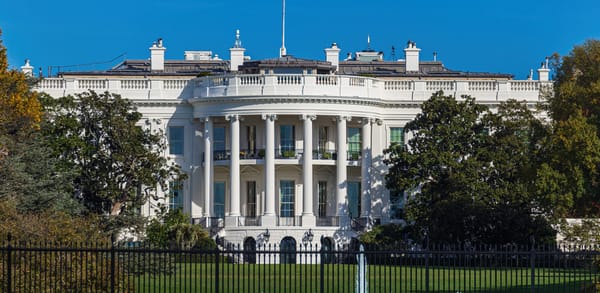The ECHR’s first climate ruling: What does it mean?
The European Court of Human Rights ruled that Switzerland violated human rights by not sufficiently tackling climate change, setting a legal precedent for future climate litigation and potentially impacting national policies across Europe.

The European Court of Human Rights ruled that Switzerland violated human rights by not sufficiently tackling climate change, setting a legal precedent for future climate litigation and potentially impacting national policies across Europe.
by Isabella Kaminski —
UK-based freelance journalist specialising
in the environment and climate change.
T he European Court of Human Rights (ECHR) has today ruled that insufficient action to tackle climate change is a violation of human rights.
In a historic judgement, the court ruled that Switzerland’s failure to do enough to cut its greenhouse gas emissions breached the rights to respect for family and private life of some of its most vulnerable citizens.
It is the first time this court, which is responsible for interpreting the European Convention on Human Rights, a treaty signed by all members of the Council of Europe (including the UK), has ruled on a climate change-related matter.
The court heard three climate cases last year in its grand chamber, which is reserved for the most serious and novel complaints.
The first was brought by a group of more than 2,000 Swiss women over the age of 64, known as the KlimaSeniorinnen Schweiz (Senior Women for Climate Protection Switzerland).
They argued they were particularly vulnerable to the climate crisis because heatwaves, which are becoming more frequent and intense, put their health at risk. Supported by Greenpeace Switzerland, their legal team presented scientific evidence showing that older people – particularly women – are more likely to die during periods of intense heat.
They asked the court to order Switzerland to do everything in its power to help keep the global temperature rise to below 1.5C – the 2015 Paris Agreement’s goal warming limit.
The Swiss government agreed that rising temperatures were harming people’s health but argued in court that the KlimaSeniorinnen should not be treated as victims under the law and said the link between its actions and their suffering was “too tenuous and remote”.
It also said that some of the claimants, several of whom were over the age of 80 and some of whom had died since the case was first filed, were unlikely to be alive by the time the global temperature rise potentially breaches the 1.5C threshold.
In a near-unanimous decision, the 17-judge panel ruled that there were critical gaps in Switzerland’s attempt to put in place a domestic climate regulation framework.
It said Swiss authorities had failed to quantify how they would cut national greenhouse gas emissions, through a carbon budget or otherwise, and had failed to meet past emission reduction targets.
While recognising that states have wide discretion in setting their own laws and developing measures to cut national emissions, the court said Swiss authorities had not acted quickly or decisively enough.
The only dissenting opinion was from UK judge Tim Eicke, who has previously said that the ECHR is not designed for environmental cases. He argued that the rest of the panel “tried to run before it could walk” and “went beyond what was legitimate”. In his view, the judgement would not make a real difference to the fight against climate change and he said the other judges were “giving (false) hope that litigation and the courts can provide the answer”.
Nonetheless, the near-unanimous decision was an unusual display of solidarity for this court. The judgement cannot be appealed.
Aoife Nolan, professor of international human rights law at the University of Nottingham, said the decision was a “huge step forward in terms of ensuring European human rights law protection in relation to the environment”.
She added that the decision would have a “seismic impact” on ongoing political discussions around amending the European Convention on Human Rights to recognise the right to a clean, healthy and sustainable environment.
Wider Implications
Climate litigation is a growing phenomenon around the world, and courts have previously linked climate inaction with human rights breaches, but this is the first time an international court has ruled on the matter.
Professor Nolan said the court’s ruling on Article 8 of the European Convention on Human Rights was particularly important. “It found that this article encompasses a right to effective protection by the state authorities from the serious adverse effects of climate change on lives, health, well-being and equality of life,” she said.
The court did not prescribe exactly what Switzerland should do to resolve the problem, leaving it to the Council of Europe’s Committee of Ministers (composed of the foreign ministers of all member states) to come up with a solution.
But it did lay out minimum governance standards that states should seek to follow. These include setting carbon budgets and interim targets, keeping these updated based on the best available evidence, and being transparent about how well they are being met.
Jenny Sandvig, partner at law firm Simonsen Vogt Wiig, who gave a statement to the court during the KlimaSeniorinnen hearing in her previous role as policy director at the Norwegian National Human Rights Institution, said that Switzerland would likely need to tighten its climate goals.
“It’s implicit in the scientific grounding of the judgement that reduction targets have to be based on the remaining global carbon budget, without disproportionately burdening younger and future generations,” she said.
Furthermore, the ruling stated that all countries within the court’s jurisdiction have to “undertake measures for the substantial and progressive reduction of their respective greenhouse gas emission levels, with a view to reaching net neutrality within, in principle, the next three decades.”
Although the judgement only applies directly to Switzerland, experts said it has clear implications for other states within the Council of Europe that have not set sufficiently ambitious emission reduction targets.

— Experts say the case has set a vital “blueprint” for holding governments to account over climate change.
More Cases to Answer
The court dismissed the two other climate change lawsuits it heard last year.
The most high profile of these was brought by a group of six young people from Portugal, led by 24-year-old Cláudia Duarte Agostinho, who claimed that government inaction on climate change discriminates against young people and poses a tangible risk to their life and health. Their case was motivated by forest fires that killed more than 100 people in Portugal in 2017 and which were worsened by climate change.
The court ruled that the group had not cleared the initial legal hurdles for bringing a case to the ECHR, given that they had not taken their case through the whole domestic legal system first.
Corina Heri, a postdoctoral researcher at the University of Zurich, said that even though two cases were dismissed, the three climate lawsuits drew on and supported each other. “In particular, the arguments created by the Duarte Agostinho case shifted what was thought legally possible, and they created new approaches to how much states know and can be expected to do about climate change.”
The judgements now open the way for a number of other climate-related lawsuits which had been adjourned.
The highest profile of these was brought by Greenpeace Nordic against the Norwegian government, seeking to prevent the expansion of fossil fuel extraction in the Arctic. Another, brought by a group of Norwegian grandparents, challenges Norway on the same issue.
The other cases are:
- An Austrian man with a temperature-dependent form of multiple sclerosis who argues, like the Swiss women, that this makes him particularly vulnerable to heatwaves.
- Five people from France, Cyprus, Belgium, Germany and Switzerland are taking action against 12 states, arguing that membership and use of the Energy Charter Treaty prevents governments from taking immediate measures to tackle climate change and therefore makes it impossible to achieve their Paris Agreement goals.
- Nine teenagers and young adults say the German Climate Protection Act, an amended version of which entered into force on 31 August 2021, is not strong enough to meet climate targets in line with the Paris Agreement. This case is a follow-up to Germany’s Federal Constitutional Court’s landmark judgement in Neubauer, which ordered the government to amend the act to comply with its climate targets.
- A pair of related lawsuits are led by two young Italian women. As in the Duarte Agostinho case, they’re challenging all members of the Council of Europe, saying storms, forest fires, flooding and heatwaves have affected them physically and psychologically.
Experts say some of these claims are similar to the successful KlimaSeniorinnen lawsuit, where individuals in particularly vulnerable situations are holding their governments to account for failing to take climate action.
The decision is also expected to lead to fresh climate litigation against governments, at a national level, at the ECHR, and against major polluters. “Businesses are required to respect fundamental human rights under various instruments, so this is directly transposable to obligations for large companies,” said Sandvig.
“The Swiss ruling sets a crucial legally binding precedent serving as a blueprint for how to successfully sue your own government over climate failures,” said Ruth Delbaere, legal campaigns director for activist group Avaaz. “The indomitable senior women have therefore opened a new chapter in climate litigation, showing how ordinary citizens can force climate action on reluctant governments.”







[Read our Comments Guidelines]